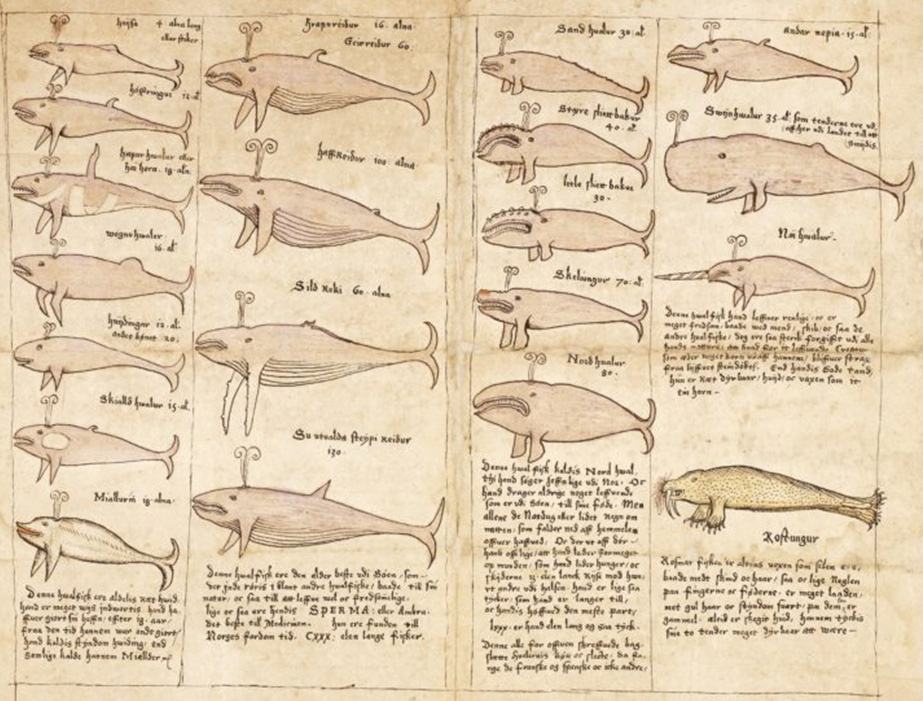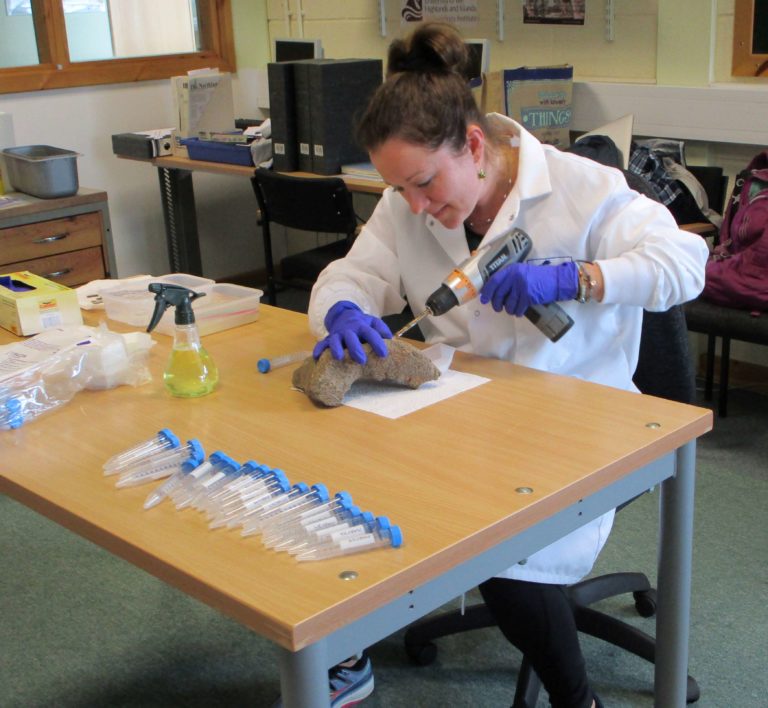Artefactual Material Derived from Whales
Principle author: Vicki Szabo
Additional contributors: Brenna McLeod Frasier, Ingrid Mainland, Claire MacKay, Michael Buckley
Contributing institutions: Western Carolina University, National Snow and Ice Data Center
Publisher: National Snow and Ice Data Center
Date Created Begin: November 30, 2015
Date Created End: November 29, 2021
Spatial Coverage: Scotland
Temporal Coverage: Iron Age (800 BCE - 500 CE), Early Viking Period, Late Viking Period, Early Medieval Period, Christianity Formally Accepted, High Medieval Period, Late Medieval, Early Modern
Subject List (FISH Vocabularies): Archaeological Objects: Mount, perforated disc, perforated object, worked object, carved object, unidentified object, disc, blank, waste, bone working debris, vessel, mammal remains; Archaeological Sciences: Human aspects, manufacturing debris, worked, carved, tool marked, ancient biomolecular analysis, zooarchaeology, bone, burnt, Stratigraphic Description; Events: Post excavation assessment, thematic survey; Historic Characterization: None
Relation: National Snow and Ice Data Center
Language: English
Format: Excel, jSON
Type: Dataset
Creative Commons Licensing: CC BY
Collection method(s): Post-excavation collections analysis; materials were sampled from the Orkney Museum archive and collections. Ancient DNA analysis. Zooarchaeology by Mass Spectrometry (ZooM).
Objects/samples collected: Bone samples
Why are you collecting this data/overall objective?: Analysis of whale species used in premodern North Atlantic
How will you use this data?: Discern patterns of whale use from species identified, quantities of bone per site, alongside textual and comparative data
Important points of interest within data: Broad array of cetacean species present on premodern Orkney sites including pilot whale, northern bottlenose whale, killer whale, bowhead whale, North Atlantic right whale, sperm whale, gray whale, fin whale, humpback whale, and minke whale. Sites sampled include Howe and Beachview (Mainland), Quoygrew (Westray), and Pool (Sanday). This project surveyed whalebone waste and offcuts to discern patterns of whalebone use at the level of a skeletal element.
Publications:
A.C. Kitchener, B.A. Frasier, M. Buckley, I. Mainland, M. Carruthers, and V.E. Szabo (2020). "First records of grey whale, Eschrichtius robustus, from Scotland." Mammal Communications (under review).
Brenna Frasier et al (2020). "Genetic examination of historic North Atlantic right whale (Eubalaena glacialis) bone specimens from the Eastern North Atlantic: insights into species history, transoceanic population structure, and genetic diversity" Marine Mammal Science (in progress).
Manasij Pal Chowdhury, Kaustabh Datta Choudhury, Geneviève Pothier Bouchard4, Julien Riel-Salvatore, Fabio Negrino, Stefano Benazzi, Ludovic Slimak, Brenna Frasier, Vicki Szabo, Ramona Harrison, George Hambrecht, Andrew C. Kitchener, Roy A. Wogelius, Michael Buckley (2020). "Machine Learning ATR-FTIR spectroscopy data for the screening of collagen for ZooMS analysis and mtDNA in archaeological bone." Journal of Archaeological Science (under review).
Description: The Whales dataset includes artifacts sampled from Bronze Age through Viking Age Orkney and lists artifact descriptions, bone descriptions, and aDNA (ancient DNA) and ZooMS (Zooarchaeology by Mass Spectrometry) data. Some artifacts were sampled as part of a larger NSF project #1503714, "Assessing the Distribution and Variability of Marine Mammals through Archaeology, Ancient DNA, and History in the North Atlantic." The NSF project has sampled whalebone from archaeological contexts from Orkney, Iceland, the Faroes, Greenland, and Newfoundland. Objects from several sites in Bronze Age, Iron Age, and Viking Age Orkney, included in the present data set, were sampled for both genetic and molecular identification. The larger project also includes historical, ethnographic, literary, and biological data in reconstructing whale use and whale populations across the premodern North Atlantic.
Retrieve full project and record-level metadata for Artefactual Material Derived from Whales on Github.


Data provided by Western Carolina University
Western Carolina University
